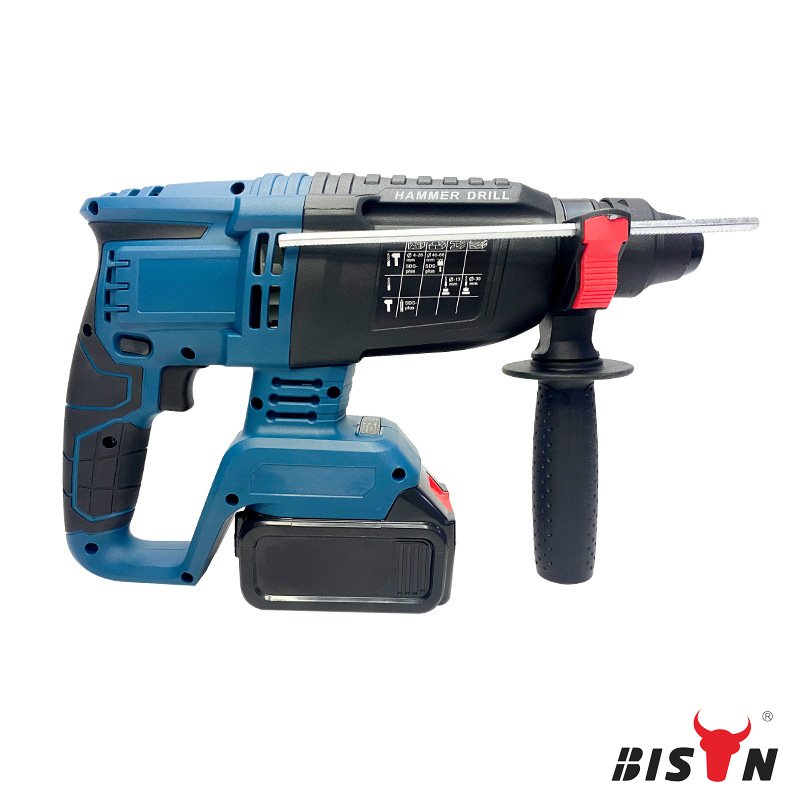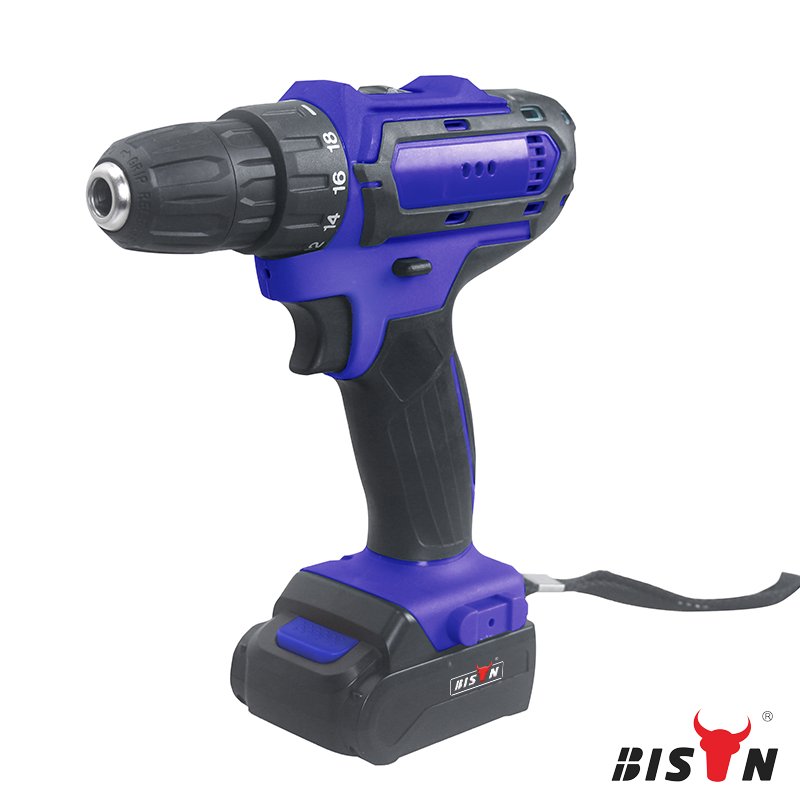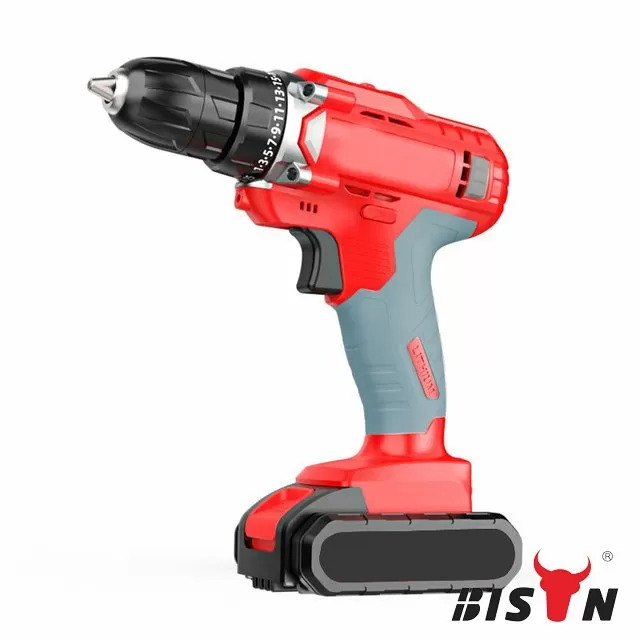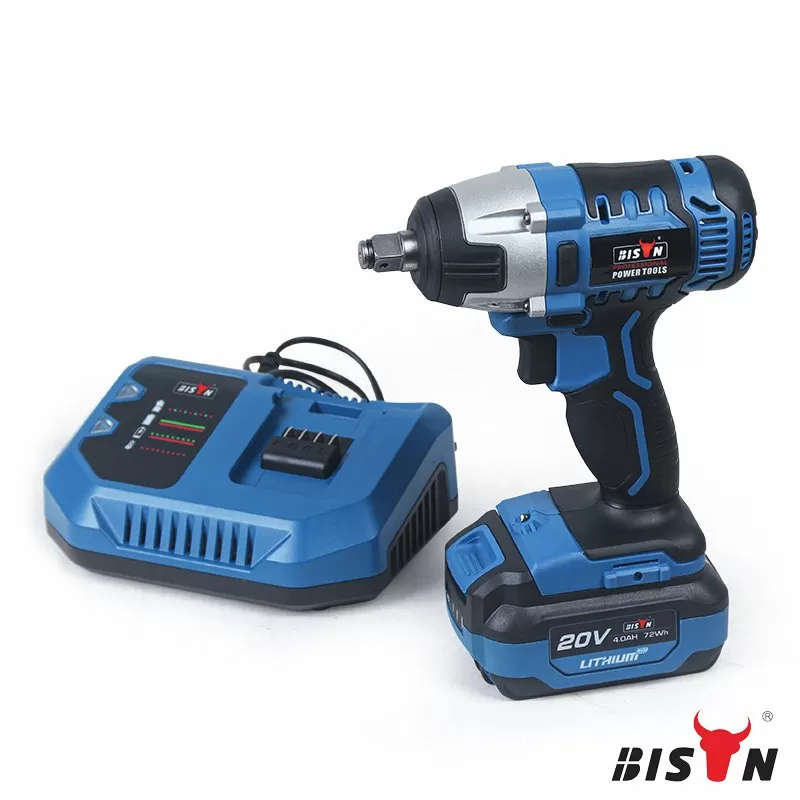how to use a power drill
2023-08-25
Table of content
Power drills are valuable power tools for home improvement and all kinds of household jobs, big or small. You can equip them with needle-thin bits to drill small holes for craft projects or chuck them into a large hole saw to cut 5-inch diameter holes in drywall and other materials. Or, you can drive screws directly into wood for many home projects.
While a power drill is an invaluable tool for getting the job done quickly, misuse can result in poor drilling results, broken or cracked bits, and even serious injury to the user. But when used correctly, a power drill can help you get the job done in less time than you ever imagined.
Today, BISON provides you with a comprehensive guide to the use of power drills. From choosing the right drill or screwdriver bit, chuck in, to drilling the perfect hole, we can help. After reading this article, you'll have the knowledge and skills you need to operate a power drill like a pro.

What is a power drill?
A power drill is a device with an electrical motor that rotates an adjustable drill bit at a speed of your choice to drill holes in various materials. The drill can also take screwdriver bits, allowing screws to be easily driven through multiple materials. The power drill is remarkably easy to use. A squeeze of the trigger turns on an electric motor, which then spins the drill or screwdriver bit.
Safety considerations
Remember to wear eye protection when using a power drill. Also, use hearing protection. While drills don't reach the 100+ decibels of sound emitted by noisy tools like circular saws, their average of 65 decibels can damage a user's hearing over time.
Power drills also can strain or break your wrist or hand when they spin out of control. This happens when the drill's torque force exceeds the opposing force you are applying manually. Drills with an extra handle for bracing the tool are beneficial. If the drill does not have a support handle, hold the bottom portion of the drill's pistol grip with your free hand to resist rotation.
How to use a power drill
#1 Select a drill or driver bit
For driving screws, use a tiny driver bit shaped like the end of a screwdriver. Drills are usually sold with a starter driver bit and flathead screws. You can purchase driver bits with different shapes.
For drill bits, the numbers on the box will display the diameter of the drill bit. Drill bit sets are typically 1/16-inch to 1/2-inch bit sizes. Large and small bits are available separately. Flat, shield-shaped speed bits are used to enlarge holes up to 1 1/2 inches in diameter.
Always use sharp drill bits for cleaner, more accurate drilling and safety. A dull drill bit will make it more difficult to drill, and it could also damage the material that you are drilling into.
#2 Chuck in a drill or driver bit
Power drills have a keyless chuck function. This means you can loosen the drill collar by turning it counter-clockwise until the chuck is large enough to allow the driver or drill bit. Then, you tighten the collar by turning it in the opposite direction. The drill rotation will hold the driver or bit securely in place.
Some drills have a key chuck system. A T-shaped tool or device included with the drill is inserted into a hole in the chuck's side, the teeth of the tool matching the teeth of the chuck. Turning it clockwise loosens the chuck, and turning it counter-clockwise tightens it.
#3 Start to drive or drill
Most power drills have a variable speed function: the drill's rotational speed increases or decreases in response to your finger pressure on the trigger. With drilling or driving, start with a slow speed and gradually increase the speed as needed. This helps you maintain better control over the drill and work material.
When drilling metal, it's recommended to use an awl or punch and hammer to tap into a slight depression to start the drill bit.
For driving screws, turning the power drill's torque setting to its lowest is helpful. This basically allows you to use the drill at a lower speed but with increased power. It is important to avoid over-tightening screws, as this could damage the material that you are screwing into.
#4 Press on a power drill
In some cases, when drilling downstream, the weight of the drill exerts enough pressure to drive the drill through the work material. In most cases, you should press the drill gently into the work material.
Complete the process. For drilling, the drill bit will continue through the work material and to remove the bit, pull outward while the drill rotates. If the drill bit is still stuck, turn the drill into its reverse mode and slowly rotate the drill bit while pulling it out.
#5 Examine the hole
If the hole you drilled was for a fastener, make sure the fastener fits into the hole relatively easily (bolts, screws, rivets). If it doesn't, either go through the hole again with a slightly larger drill bit or use the same drill bit and ream the edges by rotating the drill somewhat in a circular direction as you drill.
#6 Clean up
When all of your holes are drilled, remove the drill bit and put it back in its proper place. Place the drill and battery in the charging dock, then vacuum up any chips or dust on your work surface or the ground.
People also ask about using a power drill
Why is my drill not drilling?
The most common reason the drill cannot penetrate the wall at all is because the drill is rotating in the wrong direction. If the drill bit penetrates the wall and then hits resistance, the usual cause is an obstruction in the metal plate or masonry.
Is it safe to drill holes in the wall?
Drilling through a wall is a dangerous aspect of construction, especially if you don't have the right equipment. It's almost impossible to tell what's behind this seemingly safe structure, and hitting a water pipe, electrical wire, or gas pipe can spell disaster.
What can damage the drill?
Drilling into hard surfaces can cause the drill bit to break and sometimes become stuck. A drill usually breaks at the end of the flute due to radial force. On the other hand, excessive torque will cause the drill to break in the flute's middle.
Conclusion
A power drill can handle everything from driving and drilling to buffing and sanding. Following the step-by-step guide in this blog post, you can safely operate a power drill to drill holes and drive screws. Remember to prioritize safety by wearing proper protective gear and following the manufacturer's instructions. With practice, you will become proficient in handling the power drill and discover its versatility and efficiency in your projects.

At BISON, we understand the importance of having reliable and durable tools at your disposal. That's why we've committed ourselves to producing top-quality power drills that are not only powerful but also user-friendly. Whether you're looking to bore holes, tighten fasteners, or even mix paint, our range of power drills has got you covered.
Consider BISON, if you're in the market for a new power drill. We're a trusted power drill factory based in China, known for our commitment to quality and customer satisfaction.




